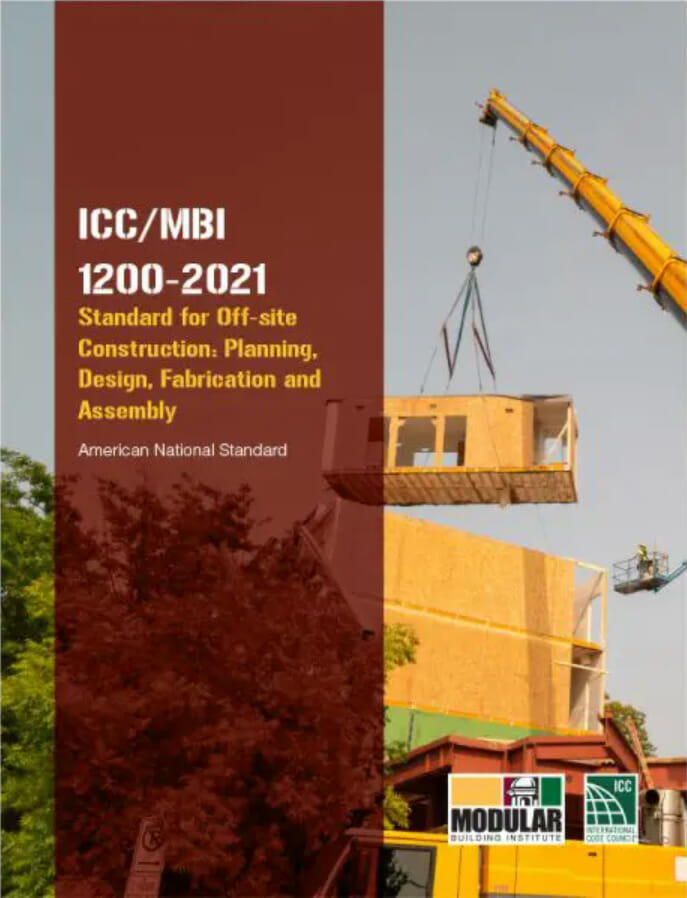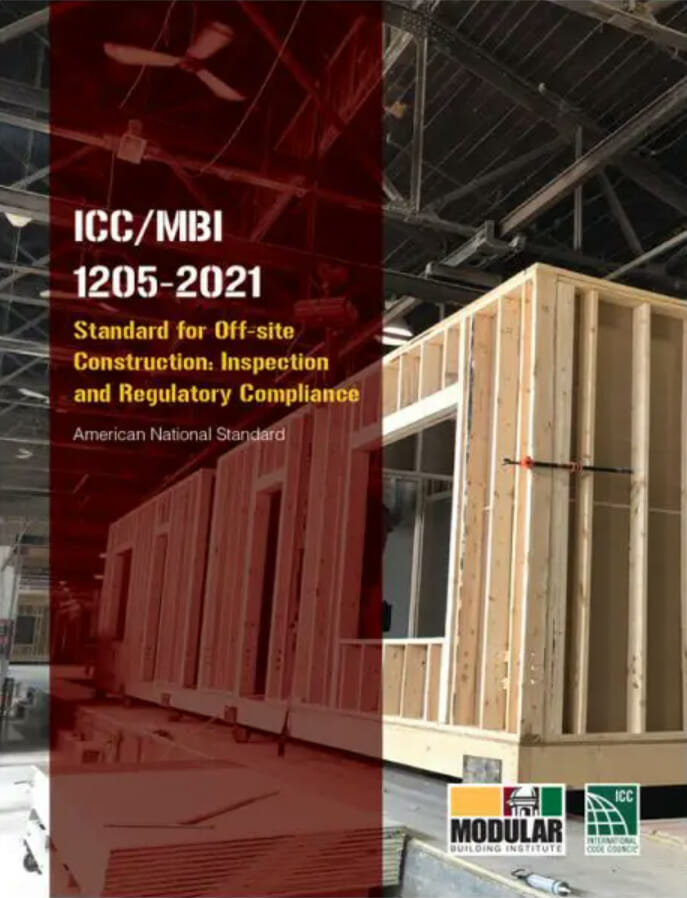Leading the Way with ICC/MBI Offsite Construction Standards: An Interview with Brian Hilderbrand of the Virginia Department of Housing and Community Development
As the demand for housing and infrastructure continues to outpace traditional construction methods, Virginia has taken proactive steps to modernize its building processes by embracing modular construction. One of the most significant milestones in this effort was the state's early adoption of the ICC/MBI Offsite Construction Standards—a move that has positioned Virginia as a national leader in the offsite construction sector.
A Strategic Move Toward National Consistency
Virginia's decision to adopt the ICC/MBI offsite building standards stemmed from a desire to address two of the most pressing challenges in the building industry: housing affordability and production capacity. Offsite construction, particularly modular methods, offers a scalable solution to both. However, the fragmented regulatory landscape across states has long created roadblocks for manufacturers and builders.
"Virginia, like the rest of the nation, is always looking for ways to address the challenges of producing enough housing to keep up with demand and making housing more affordable," said Brian Hilderbrand, Construction Regulation Administrator at the State Building Codes Office in the Virginia Department of Housing and Community Development.
“Offsite construction plays a critical role in addressing these challenges, but navigating the patchwork of regulatory requirements related to offsite construction across the country has long been identified as a major barrier for the offsite construction industry. Implementation of a national standard for the approval of offsite construction is an important step in addressing this barrier.”
By adopting a nationally recognized standard, Virginia helped eliminate this inconsistency. The state played a key role in developing the standards and became one of the first to implement them.
“The standards have improved our program by formalizing many of the policies and practices we had in place and ensuring that the requirements are clear and consistent. Our industry customers regularly express their appreciation for Virginia’s offsite program and for our willingness to be a leader in addressing the barriers they face.”
continued below...
ICC/MBI Standards for Off-Site Construction
Published in partnership with the ICC, these off-site standards bring clarity to the off-site and modular construction processes.

ICC/MBI 1200-2021 Standard for Off-site Construction: Planning, Design, Fabrication and Assembly
This first edition standard provides planning and preparation requirements such as: the role of the architect, modular manufacturer, construction manager, and general contractor; location of plant vs. construction site; and material procurement and lead times.
ICC/MBI 1200-2021 includes requirements for:
- A controlled manufacturing environment.
- Supply chain integration.
- Structural modular vs. nonstructural modular.
- The fabrication process and on-site assembly.

ICC/MBI 1205-2021 Standard for Off-site Construction: Inspection and Regulatory Compliance
The scope of this first edition standard is to provide minimum requirements to safeguard the public health, safety and general welfare and address societal and industry challenges for the inspection and regulatory compliance of off-site and modular construction. It addresses the inspection, approval and regulatory compliance of off-site residential and commercial construction components as well as their assembly and completion at the final building site.

ICC/MBI 1210-2023 Standard for Mechanical, Electrical, Plumbing Systems, Energy Efficiency and Water Conservation in Off-site Construction
The scope of this standard is to provide minimum requirements to safeguard the public health, safety, general welfare and address societal and industry challenges for the energy efficiency and water conservation of off-site construction projects and the planning, designing, fabricating, transporting, and assembling, of commercial and residential building mechanical, electrical and plumbing (MEP) system elements. This includes the componentization and modularization of elements of MEP systems, the incorporation of MEP systems in componentized, panelized or modularized building elements, and the achievement of energy efficiency and water conservation requirements in off-site construction.
Rapid Growth of Commercial Modular Construction Since 2019
Virginia has witnessed a surge in commercial modular construction projects over the past several years.
"By a significant margin," said Hilderbrand, "utility type accessory structures have increased the most. This would include control rooms for substations and cell towers, gensets, switchgear enclosures, etc., followed by guard shacks and construction trailers. There has also been a significant increase in educational buildings for both schools and private companies."
A growing trend has also emerged around modular bathroom pods. In fact, one Virginia-based manufacturer recently produced 314 pods for a hotel in the southwest region of the state, with another producer preparing to deliver a similar quantity for a hotel project in Central Virginia.
"I believe the primary reason for the sustained growth is the increase in awareness of the availability and versatility of these structures at a considerably more affordable cost," commented Hilderbrand. "Registered design professionals are seeing the advantages to incorporating these structures into their designs, saving their customers time and money while increasing quality.
"Based on conversations with local building departments, contractors and other stakeholders, we anticipate significant increases for the foreseeable future in not only the utility occupancies but in R-2, A-3, and E occupancies as well."
Driving Factors Behind Continued Growth
The sustained expansion of modular construction in Virginia can be attributed to increasing awareness of the benefits these structures offer. Cost efficiency, time savings, and improved quality control have made modular systems a preferred option for many design professionals. Architects and engineers are now more inclined to integrate modular components into their plans, which has translated to greater adoption across sectors.
In Hilderbrand's opinion, "the most impactful [reason modular construction is growing in Virginia] is plan review."
"In Virginia," he said, "the CAA’s review the drawings in accordance with the Virginia Uniform Statewide Building Code, comment on non-compliances, and approve compliant drawings, evidenced by their seal on each page. The CAA is then required to submit 20% of all Virginia Plans they approve each month (minimum of 1) to the SBCO for a cursory review. This eliminates a common bottleneck caused by the state reviewing and approving the drawings causing significant delays, which discourages the use of modular units."
Even during the challenges posed by the COVID-19 pandemic, the upward trajectory continued—a testament to the resilience and appeal of modular construction.
Promoting a Modular-Friendly Environment
Another vital initiative has been education. Many local officials initially lacked a clear understanding of modular construction and its rigorous quality assurance processes. Confusion between manufactured homes and industrialized modular buildings further complicated acceptance.
"So many of the local officials do not have a clear understanding of modular and the multiple layers of quality assurance checks required before seals are affixed," said Hilderbrand. "There are some that still do not understand the difference between Manufactured Homes and Industrialized Buildings. Here in Virginia, we provide an 8-hour class in localities throughout the state every year on offsite construction. Through these efforts, we have seen a significant increase in awareness leading to considerably greater acceptance and even appreciation of modular buildings."
Virginia’s embrace of modular construction and its adoption of the ICC/MBI standards serve as a compelling example of how states can modernize their building codes, support industry innovation, and meet urgent construction needs. Through strategic planning, regulatory clarity, and public education, the Commonwealth is not just responding to today's challenges—it's building for the future.
About the Author: John McMullen, PCM, is the marketing director for the Modular Building Institute. You can reach him directly at mcmullen@modular.org or on LinkedIn.
More From Modular Advantage
Resia: Breaking All the Rules
Resia Manufacturing, a division of U.S.-based Resia, is now offering prefabricated bathroom and kitchen components to industry partners. Its hybrid fabrication facility produces more precise bathroom and kitchen components (modules) faster and at lower cost than traditional construction. Here’s how Resia Manufacturing does it.
How LINQ Modular Innovates to Bring Modular To The Market in the UAE and Beyond
LINQ Modular, with an office and three manufacturing facilities in Dubai, is a modular firm based in United Arab Emirates. The company is on a mission: to break open the housing and construction markets in the Gulf Cooperation Council (GCC) area with modular.
ModMax: Redefining Modular Construction with Confidence and Precision
ModMax was born out of frustration—frustration with five persistent pain points in modular construction: Permitting bottlenecks. Production delays. Rigid designs. Disconnect between “the office” and the field. Lack of transparency and communication.
LifeArk: Disaster-Resilient Housing from Recycled Plastic and 100-year-old Technology
Wee compares LifeArk’s housing units to Yeti coolers, as they are built similarly. Each component takes 15 to 20 minutes to manufacture, has an R-value of 40, and includes molded slots and chases for wiring, plumbing, fire sprinklers, and other utilities.
Building the Future of Modular Edge Infrastructure
The edge data center market is expanding rapidly, driven by the surge in AI workloads, IoT adoption, and the need for localized compute power. In these environments, sustainability, scalability, and reliability are non-negotiable. Cooling is among the most complex challenges for operators—and one of the most decisive factors in long-term success.
Accelerating Light-Gauge Steel Construction: A Semi-Automated Digital Workflow for Off-Site Projects
For construction professionals, the message is clear. By adopting semi-automation and digitalization, companies can deliver projects faster, more accurately, and more profitably, while also building stronger collaboration across teams. The approach is not about replacing people with machines, but about empowering people with better tools and processes.
Why Modular Data Centers Are Gaining Momentum
Artificial intelligence, high-performance computing, and edge applications push the limits of traditional “stick-built” data centers. They take years build, often struggle with high density workloads, and aren’t optimized for deployments near end users. Modular data center platforms are purpose-built to address these challenges, offering flexibility and scalability to adapt to evolving technologies, while opening new opportunities for the modular construction industry.
Supply Chain Innovation in Action: 5 Habits Every Modular Leader Should Practice
By applying these principles to supply chain practices — collaborative planning, strategic procurement, scenario modeling, digital tools, and transparent forecasting — construction leaders can build value chains that are not just efficient and agile, but truly innovative.
Exploring the Role of Modular Integrated Construction (MiC) in Advancing Circular City Principles – A Survey of Stakeholder Perspectives
The survey findings highlight the significant potential of Modular integrated Construction (MiC) in advancing the development of circular cities. By reducing costs, accelerating construction timelines, and minimizing waste generation, MiC offers a promising approach to sustainable urban development.
The Use of MS POLYMER™-Based Sealants and Adhesives in Modular Building
These products combine flexibility and elastic recovery with excellent adhesion to different substrates and have already shown their usefulness in traditional construction. Now it’s time for them to be put to use in the modular construction industry.










